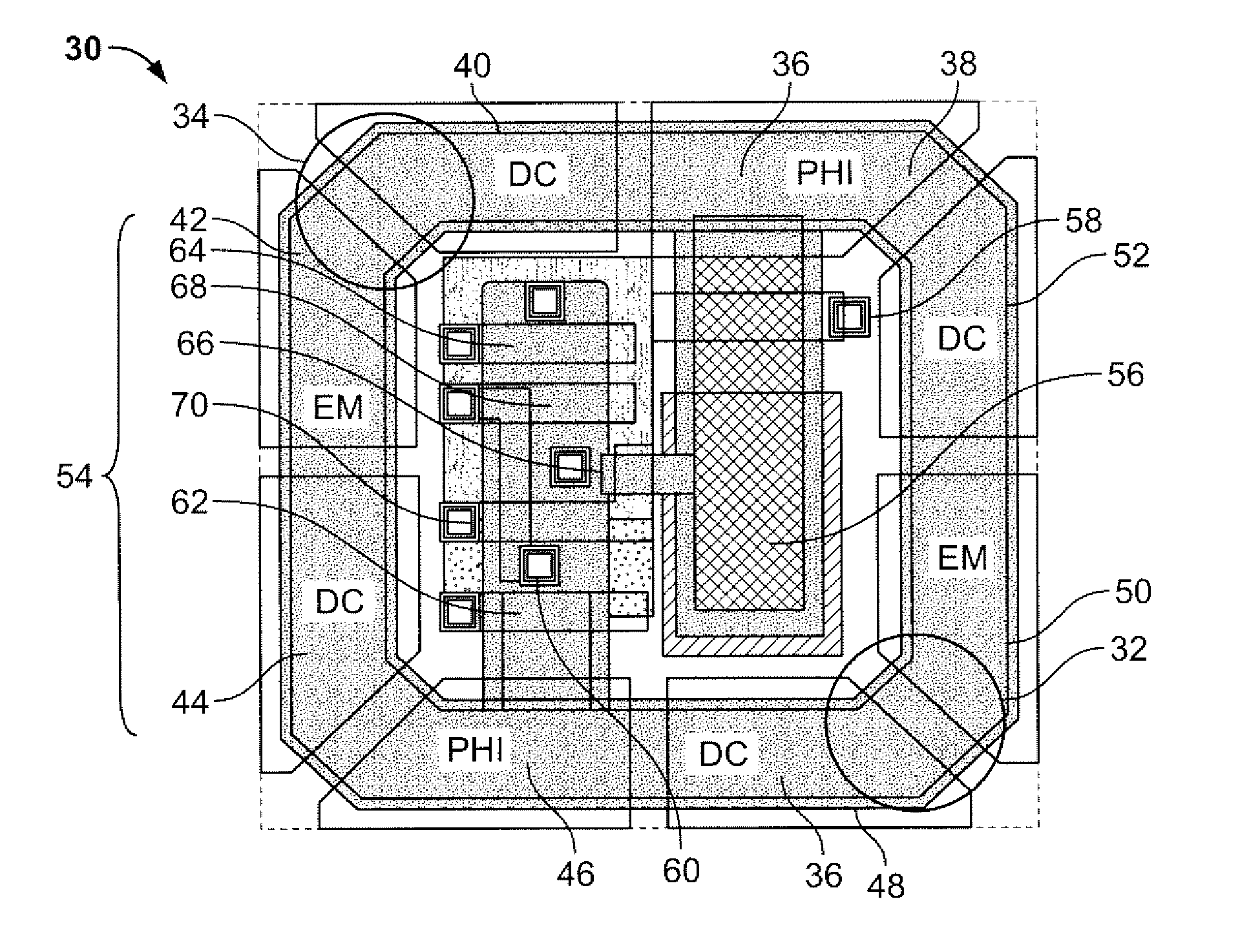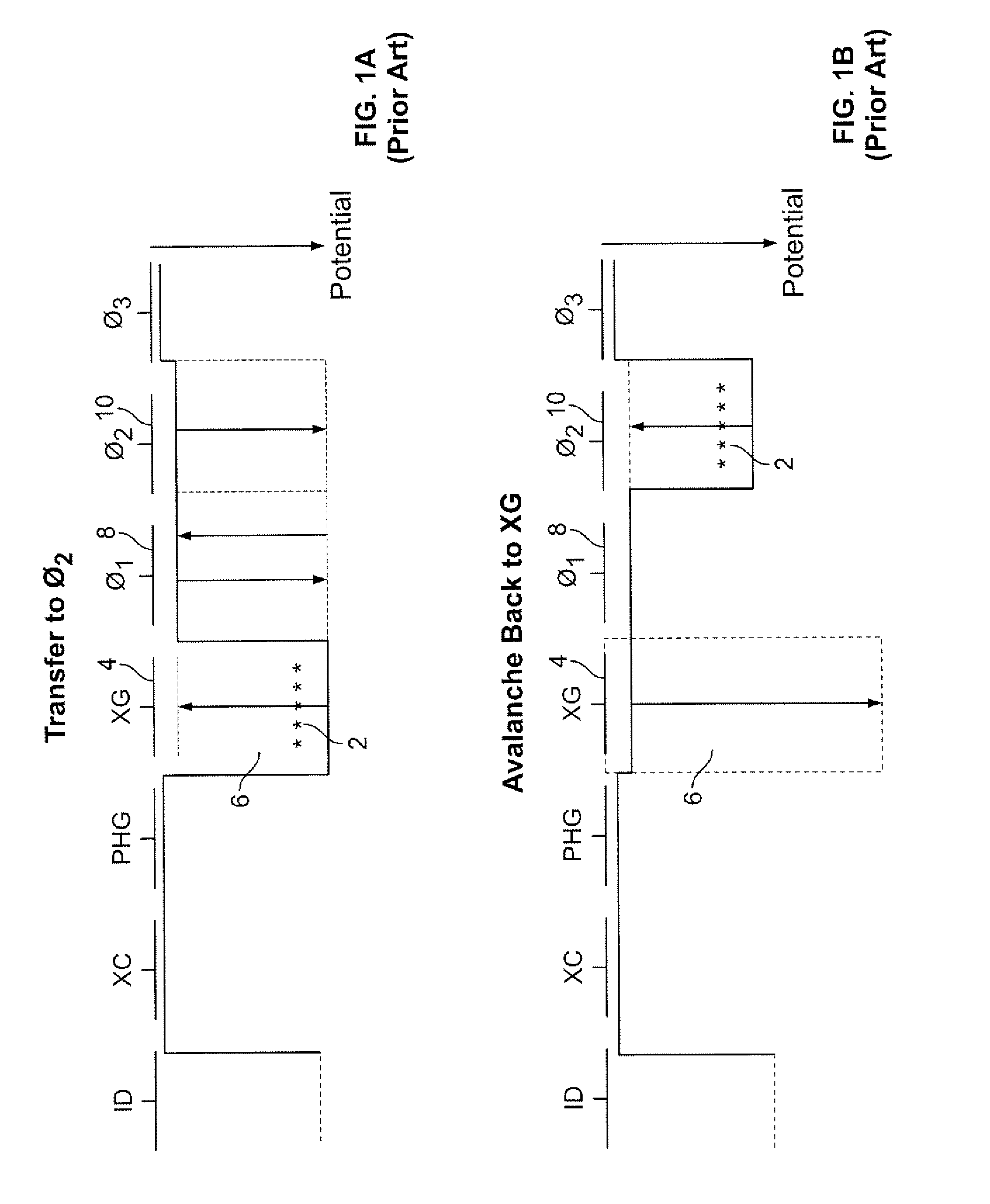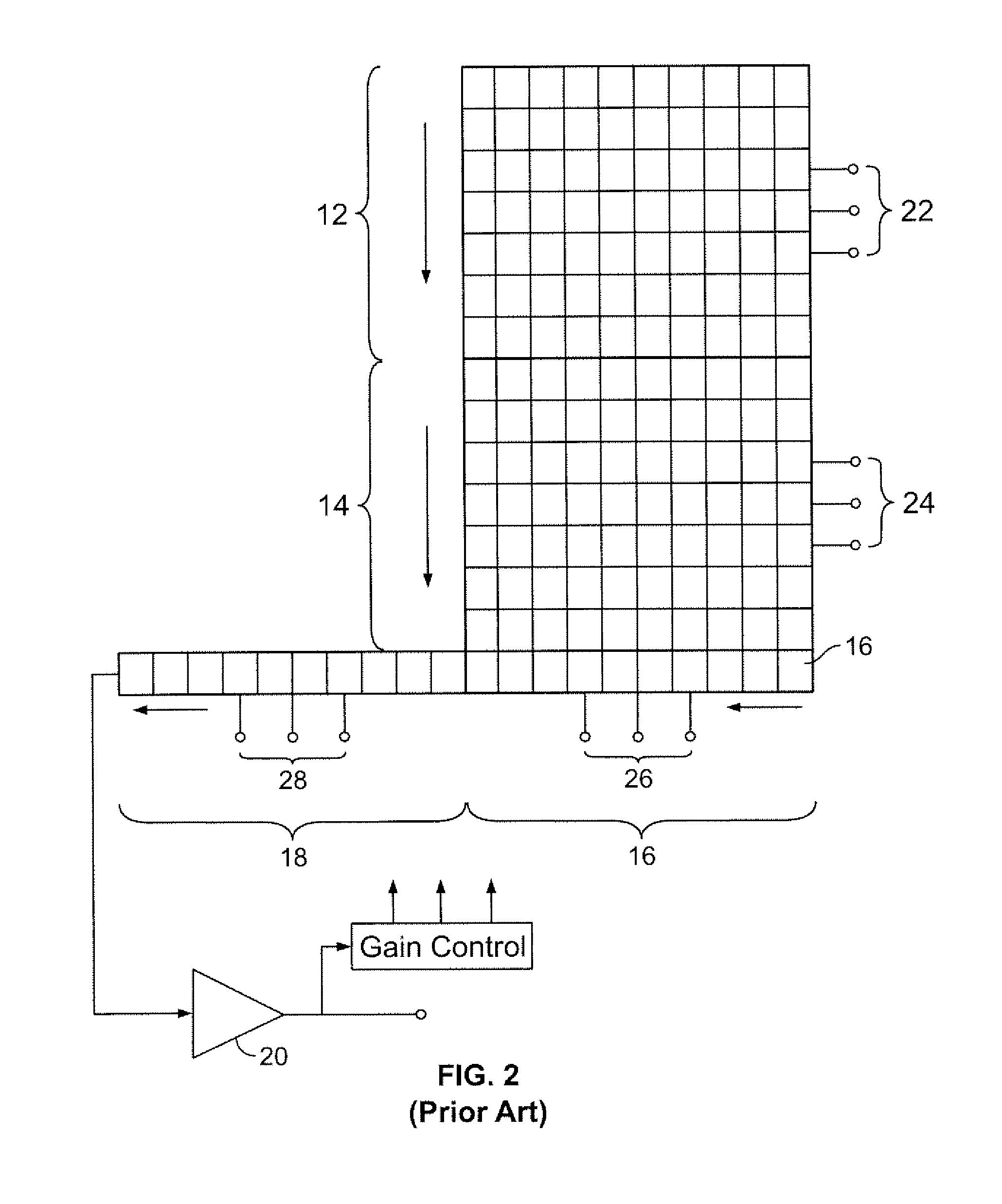Electron multiplication CMOS imager
a cmos imager and multi-core technology, applied in the field of imaging systems, can solve the problems of large size imagers that are expensive and increase the number, and achieve the effect of more amplification
- Summary
- Abstract
- Description
- Claims
- Application Information
AI Technical Summary
Benefits of technology
Problems solved by technology
Method used
Image
Examples
Embodiment Construction
[0023]Referring now to FIGS. 3A and 3B, plan views of an EMCMOS device layout and architecture is depicted. Rather than having separate charge collection, storage, and electron multiplication (EM) regions, all three functions are incorporated into a single pixel 30 formed monolithically as an integrated circuit. The pixel 30 includes one or more electron multiplication (EM) gain regions 32, 34 whose accumulated charge circulates around an enclosed track or circulating register called the EM gain register 36. In FIGS. 3A, 3B, there are a total of eight gates which constitute two stages of the EM gain register 36: PHI (clocked gate) 38, DC gate 40, EM (high voltage clocked gate) 42, DC gate 44, PHI 46, DC Gate 48, EM 50, and DC Gate 52. A readout structure 54 comprising a number of sub-structures are fabricated in the pixel 30 nested within the EM gain register 36. The light sensitive area, which creates electrons in proportion to the radiant energy incident on the pixel 30 can be an ...
PUM
 Login to View More
Login to View More Abstract
Description
Claims
Application Information
 Login to View More
Login to View More - R&D
- Intellectual Property
- Life Sciences
- Materials
- Tech Scout
- Unparalleled Data Quality
- Higher Quality Content
- 60% Fewer Hallucinations
Browse by: Latest US Patents, China's latest patents, Technical Efficacy Thesaurus, Application Domain, Technology Topic, Popular Technical Reports.
© 2025 PatSnap. All rights reserved.Legal|Privacy policy|Modern Slavery Act Transparency Statement|Sitemap|About US| Contact US: help@patsnap.com



